Spaghetti with Colatura di Alici di Cetara (Anchovy Condiment)
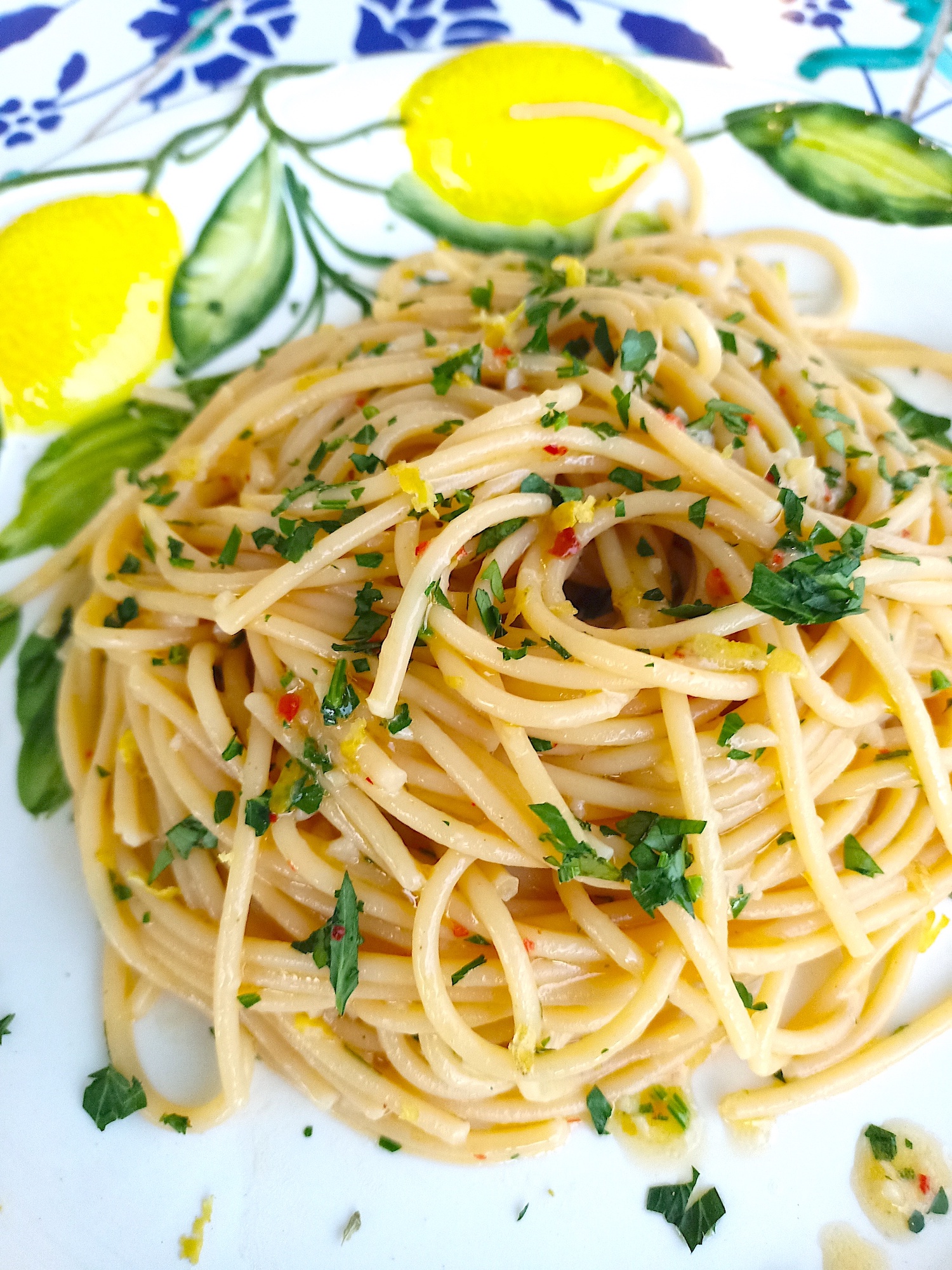
Spaghetti with Colatura di Alici di Cetara is one of my favorite pasta dishes from the Campania region. I often find myself wondering how something so quick and easy to prepare, with such meager ingredients, can be so utterly delicious. But then I recall the featured ingredient, the ‘Colatura di Alici di Cetara,’ which is the miraculous liquid result of the slow, careful process of the maturation and pressing of salted anchovies. A process created long ago by the Cistercian Monks of Amalfi that was derived from GARUM —the fermented fish sauce commonly used by the Ancient Romans as a condiment to season their food.
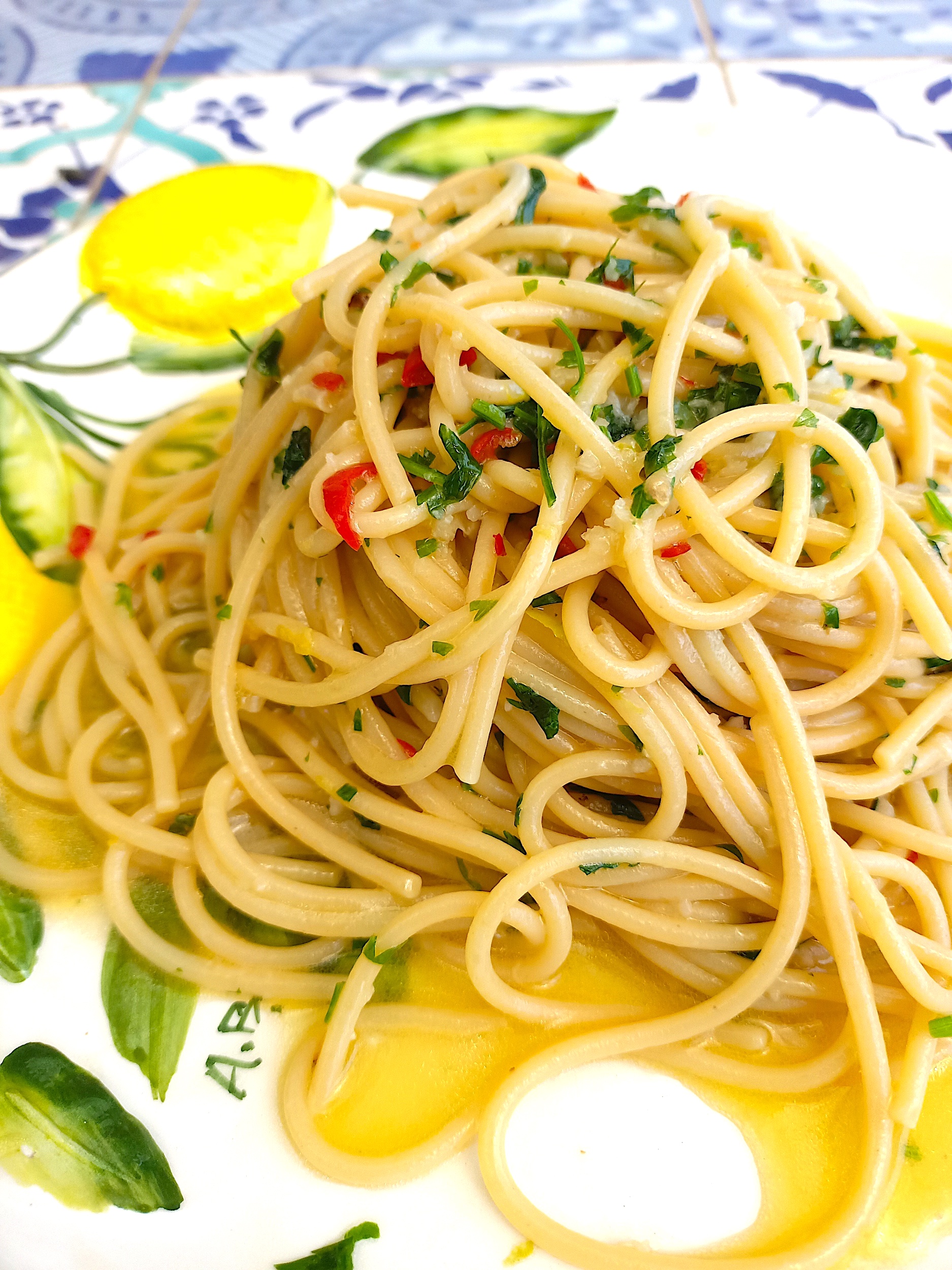
The amber-colored liquid, which has been produced in the quaint fishing village of Cetara on the Amalfi Coast for ages, has a unique, intense (briny) sea-worldly flavour, that contributes to the especially delicious taste of many of the beloved specialty dishes from the village —either on its own or pared with a variety of simple ingredients. So when my son came home with a beautiful bouquet of fresh hot chili peppers for me the other day…
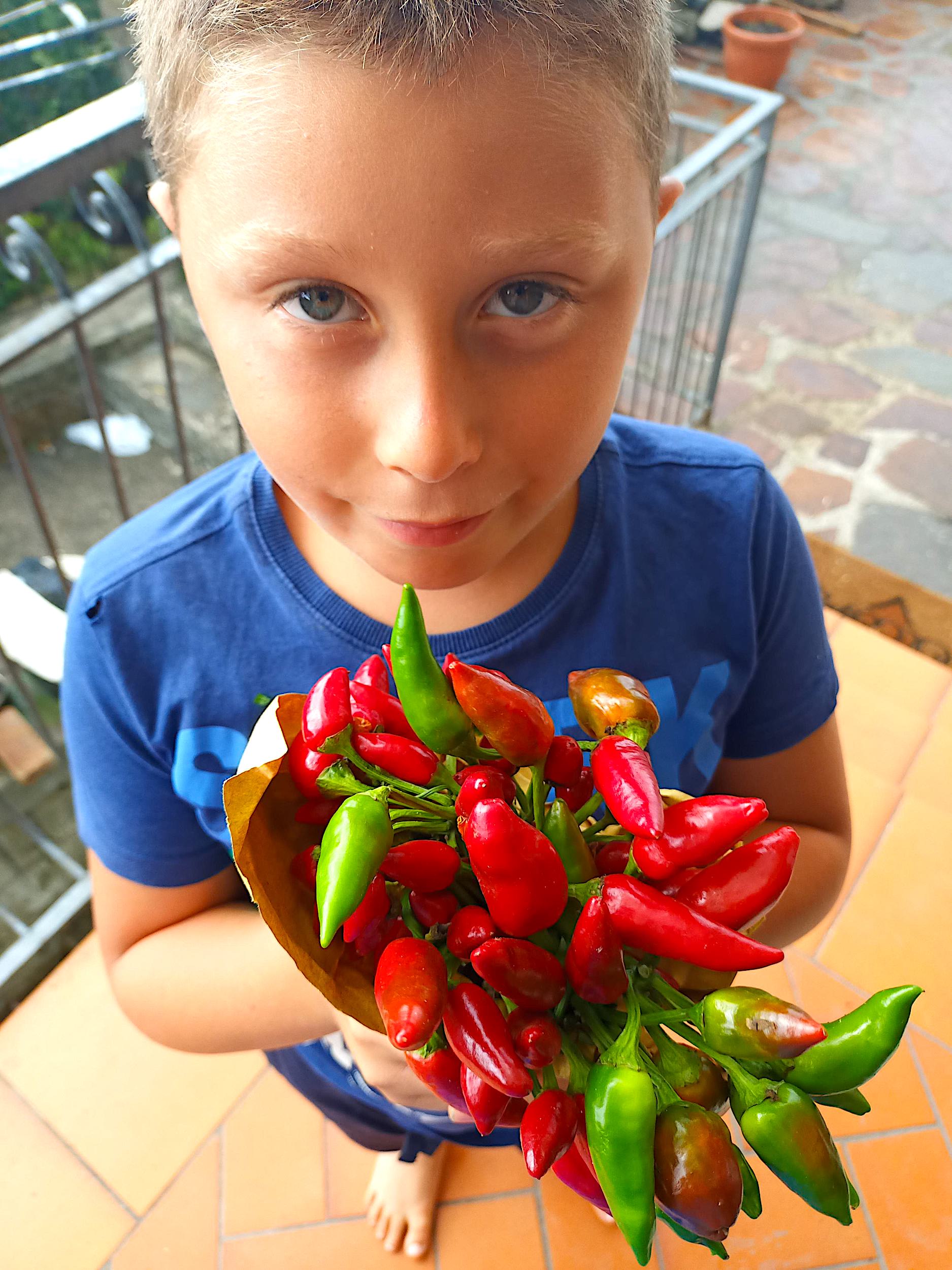
right away, I thought of preparing this popular pasta dish, ‘spaghetti with colatura di alici,’ which is not only a staple on tables in traditional Cetarese households, but also includes the fresh chili peppers as a part of the delicious mix of simple ingredients in the recipe. As the ‘colatura di alici di Cetara’ ranks high on my list of key ingredients to have on hand for delicious cooking, Campania style —the gathering of the ingredients and the preparations took no time at all. After all, the spaghetti was being dressed with a crude condiment.
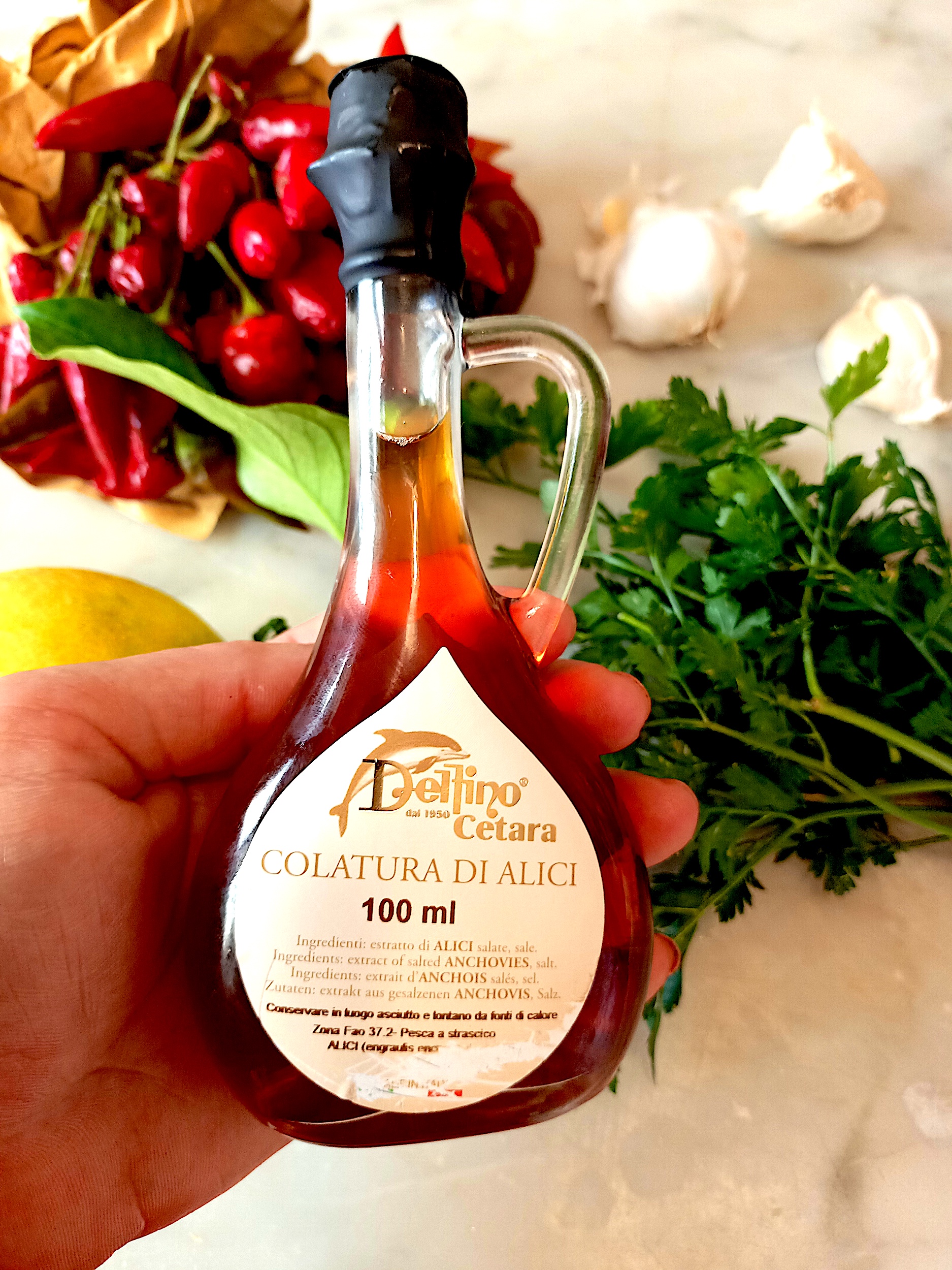
The preparation. As the pasta cooks, finely chop the garlic, parsley, and chili pepper together on a work surface. Then toss them into a bowl large enough to accomodate the cooked pasta. Pour in the olive oil, colatura di alici di Cetara, and a small ladleful of the pasta cooking water. Whisk until well incorporated.
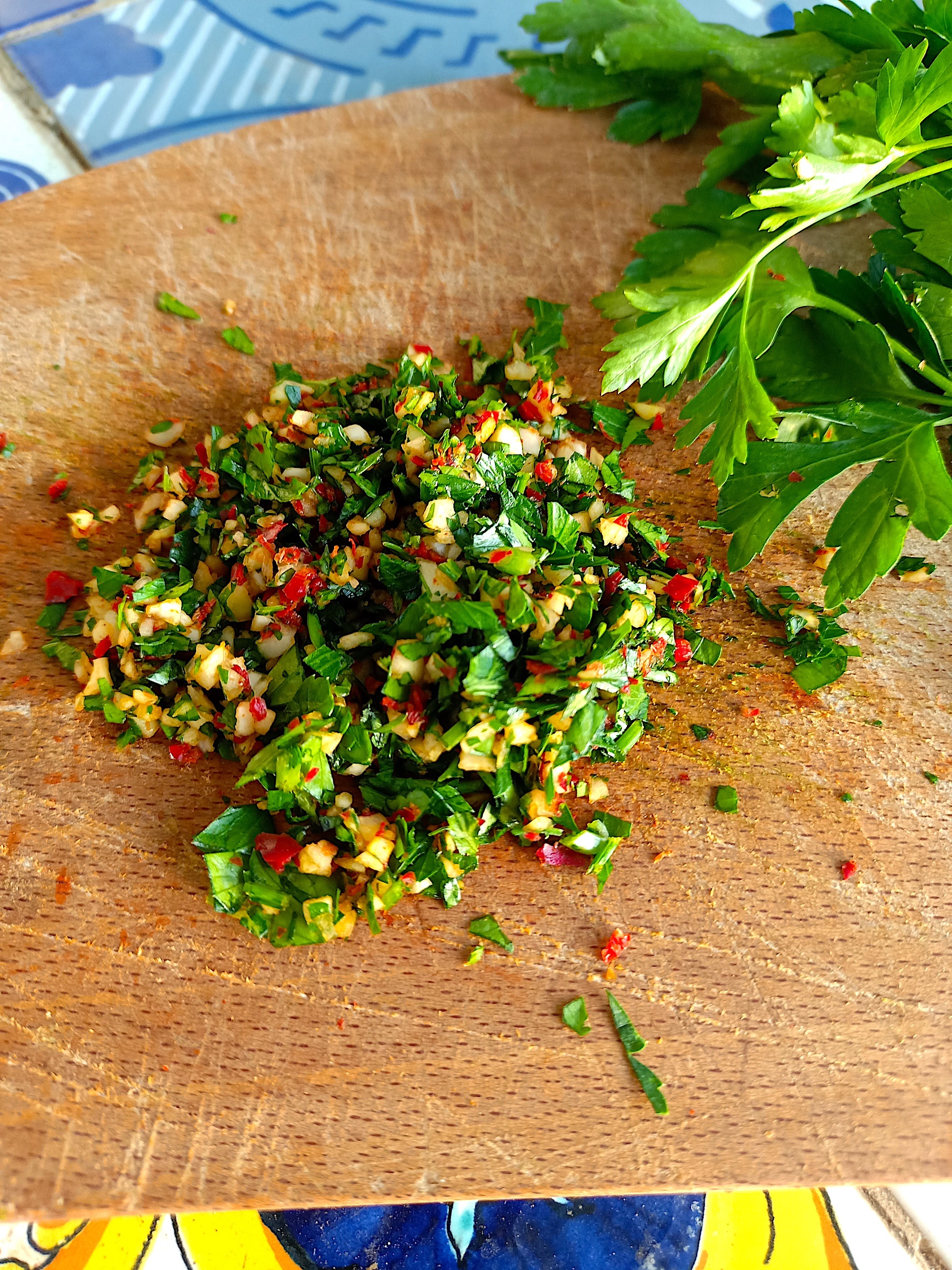
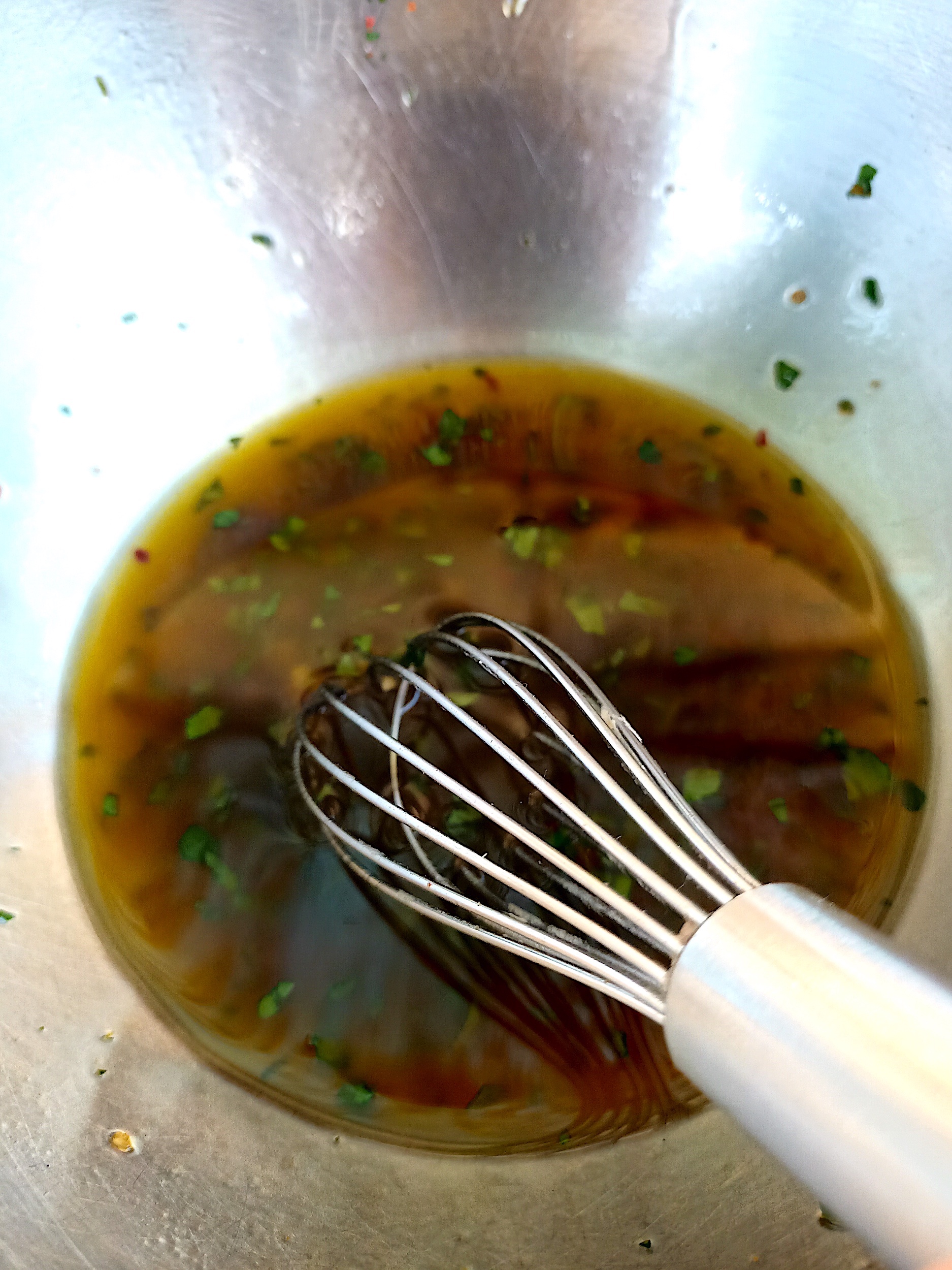
Drain the pasta. Add the pasta to the mixing bowl and toss well to combine the ingredients. Sprinkle in the lemon zest and toss everything together until the pasta is well coated with the sauce. Simple as can be, in every way, and so utterly delicious! Buon appetito, friends!

≈
*You can locate the ‘colatura di alici di Cetara’ in well-stocked Italian specialty stores in the US, or by searching online.
*If you’d like to learn more about the preserved anchovies and colatura di alici di Cetara, I wrote up more about it on the site → explore more
*For more info about Delfino Battista → website
≈
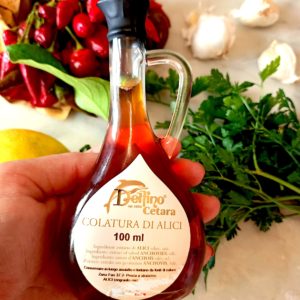
Ingredients
- 400 grams spaghetti
- 5 or 6 sprigs fresh flat-leaf parsley leaves removed and reserved
- 1 or 2 medium garlic cloves, to taste
- 1 or 2 small fresh red chili peppers, sliced in half and deseeded, or dried red chili pepper, to taste
- 8 tbsp olive oil, extra virgin
- 4 tbsp colatura di alici di Cetara
- Finely grated zest of ½ medium lemon
Instructions
- Bring a large pot of unsalted water to a boil. Add the pasta and cook until al dente.
- Meanwhile, finely chop the parsley leaves, garlic, and chili pepper together on a work surface. Put the chopped ingredients in a mixing bowl large enough to accomodate the pasta. Pour in the olive oil, colatura di alici, and a small ladleful of the pasta cooking water. Whisk until the ingredients are well incorporated.
- Drain the pasta. Add the pasta to the mixing bowl and toss well to combine the ingredients. Sprinkle in the lemon zest and toss everything together until the pasta is well coated with the sauce.
- Plate the pasta and spoon over any remaining sauce. Serve garnished with parsley, and/or a slice of lemon.
